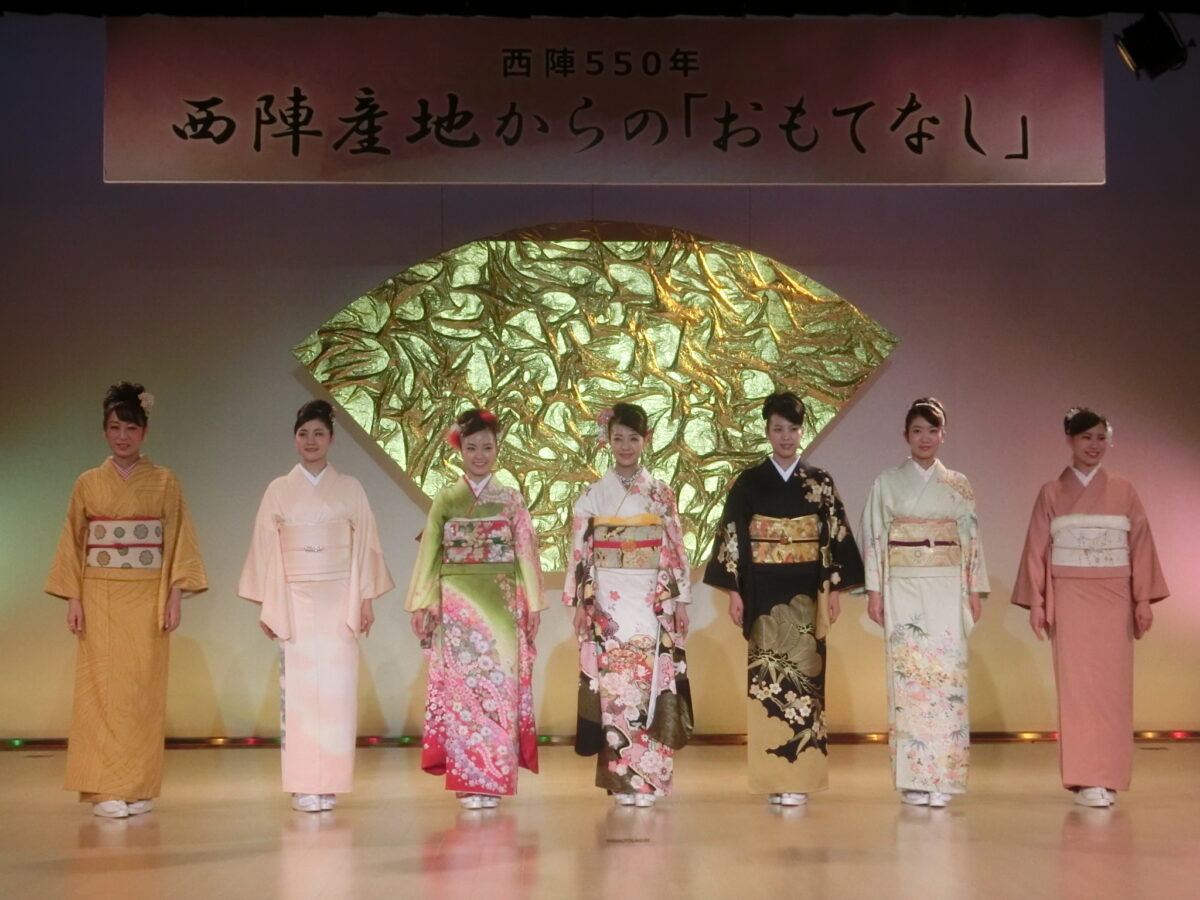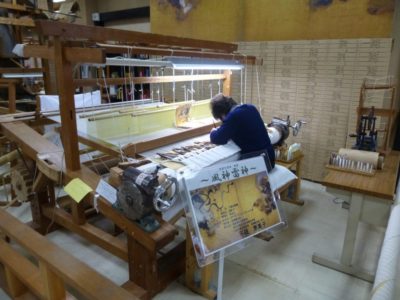In the Nishijin district in Kyoto, Japan, there has been a big civil war called the Onin War in the 15th century. The Western Camp led by Yamana Sozen made its headquarters here, and this is why it was named Nishijin. Naming it Nishijin, literally meaning ‘western headquarters’, happened after the war. Learn more about this traditional district and the Nishijin Textile Center!


History of Nishijin District
Nishijin-ori or Nishijin fabric is the traditional textile produced in the Nishijin district. It is said that they already started the production of textiles here in the late 5th century. When Kyoto became the capital city of Japan in 794, they produced the fabric that was needed at the Imperial Court. Later they made fabrics for the samurai, too. After the Onin War, the Nishijin factories became under the direct control of the Ashikaga Shogun of the Muromachi Shogunate (14th – 16th century). At that time, the production expanded significantly.
The characteristics of Nishijin fabric is that they use many different types of colored yarns weaving them together into decorative designs. Then they make beautiful kimono from this fabric. Each process is operated by a different workshop, which are like small factories. For example, the dying workshop makes only colored threads and then brings them to the weaving workshop. This way of working has produced true specialists in each field.
Nowadays, it is an interesting area to walk around. It is not the commercial center of Kyoto, so the area is not busy and not completely overrun by either domestic or international tourists. There is a quiet atmosphere, and you can still find traditional houses. Among these houses, you can find artisans’ workshops and a small Kimono museum.
Nishijin Textile Center
The original Nishijin Textile Hall was built in 1915, and it was reconstructed as a modern building which became the Nishijin Textile Center in 1976 to promote their products. The center has three floors that tourists can visit.
On the first floor, they explain the production process of Nishijin fabric from sericulture to weaving, using dioramas and photo panels. There is also a workshop where they demonstrate how they weave the fabric with the weaving machines, and you can even try a hands-on experience. There is a restaurant where you can have Japanese food or a cup of coffee.
On the second floor, you can find souvenir shops. They sell a variety of products using Nishijin fabric; kimono, yukata (casual cotton kimono), shawls, bags, neckties, handkerchiefs, wallets, Japanese dolls, and so on. In one corner there is a secondhand kimono shop where you can buy traditional kimonos at a reasonable price. But please be careful, because it is not easy to wear a kimono by yourself if you don’t learn how to wear it. Even many Japanese ladies take lessons several times just to learn how to wear it.
Kimono Show
On the third floor, they perform a Kimono Show 6 times a day at 10:30, 11:30, 13:00, 14:00, 15,00, and 16:00. Each show lasts about 10 minutes. About 7 models appear, wearing different types of kimono. One may wear a colorful kimono with long sleeves and butterfly-shaped obi sash which is for unmarried young ladies. One may wear a sober color kimono with a simple square-shaped obi sash which is often worn by senior ladies. Ladies choose their kimono by their age, season, and occasion.
This may be the only place in the world where you can see the fashion show of kimono every day. At the end of the show, all the ladies appear at the same time, which is the best time to take a good picture. Yes, you can take pictures during the show!
If you want to see expensive kimono from up close, there are exhibition rooms on the same floor where you can see historical kimono and high-quality ones.
If you want to try to wear kimono yourself, you can try on one of the rental kimono. As it is not easy to put on a kimono by yourself, or even almost impossible if it is your first time, the staff is happy to help you to wear them. You will have your pick from various kinds of kimono, and you can take pictures and walk outside in the old town if you want.
Your Japan Tour
As seasoned Japan experts, we can help you create your perfect Japan tour including guides who can tell you all about the Nishijin Area including this Nishijin Textile Center. Contact us to start planning your unforgettable holiday to this fascinating country. Japan is full of once-in-a-lifetime experiences, culture, history, nature, and delicious food!
Information
Access: From Kyoto Station, take a local bus to Horikawa-Imadegawa bus stop or take a subway to Imadeawa Station.
Entrance: Free entrance to the kimono show and shops
Hands-on experience: From 2,000 yen depending on what you make.
Kimono wearing experience: From 3,000 yen depending on the types of kimono.
You need reservations for hands-on experience and kimono wearing experience.
Hours:
March to November: From 10:00 to 18:00
December to February: From 10:00 to 17:00